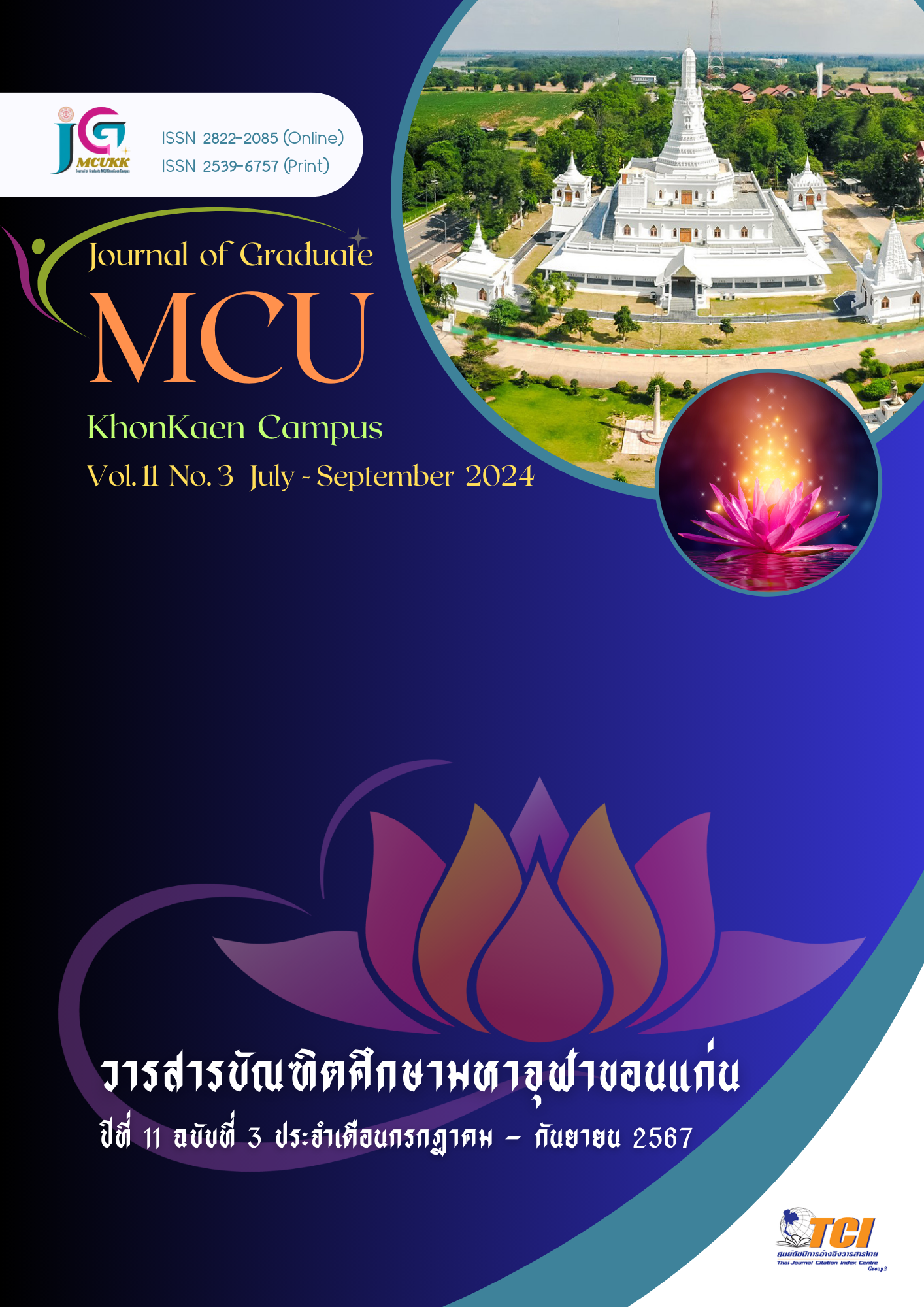An Appproach to Develop Teaching Model Using Design Thinking and Growth Mindset to Enhance Innovative Thinking Skills and Innovative Minds for Lower Secondary Students
Main Article Content
Abstract
The objectives of this study were to: 1) examine the problem and manage the instructional that enhances innovative thinking skills and creativity of science teachers who are at the middle school level; and 2) study an approach to development of an instructional model using design thinking and growth mindset to enhance innovative thinking skills and innovative minds for lower secondary students. The target group consists of 7 science teachers. The research instruments include questions used in group discussions.
The findings were as follows:
1) The current problems and needs in the management of science education concerning learners indicate that students are experiencing a decline in their learning ability; there are problems with scientific skills, a lack of basic knowledge, dependence on phones, a lack of commitment to study, a lack of motivation, an inadequacy of
technological media, a lack of readiness for innovative media, and in the terms of
teachers, a lack of expertise in using technological media. The commitment to develop innovative thinking skills and creative mindset involves
using existing knowledge to create something new; furthermore, learning from basic data to build upon as innovation allows students to have a foundation related to the environment and to create diverse examples that integrate learning from the curriculum, use technology to create work and foster innovation, develop a habit of not copying others’ work, and contribute knowledge that encourages independent thinking based on one’s strengths and interests, leading to awareness and generating motivation.
2) The approach to development of an instructional model is as follows: Encourage students to think critically, ask questions by using various methods, promote out-of-the-box thinking, raise creativity, and present challenging problems, providing opportunities for them to design their own problem-solving methods. Setup the classroom environment that promotes independent thinking, provide examples of successful individuals and innovation to inspire, encourage teamwork, facilitate the exchange of ideas, and use supplementary activities. Developing and building on what exists in the local area, implementing community development projects that allow for practical training in creating prototypes or actual creative works, supporting students in showcasing their work, and listening to feedback.
Article Details

This work is licensed under a Creative Commons Attribution-NonCommercial-NoDerivatives 4.0 International License.
References
มานิตย์ อาษานอก. (2561). การบูรณาการกระบวนการคิดเชิงออกแบบ เพื่อพัฒนานวัตกรรมการจัดการเรียนรู้. วารสารเทคโนโลยีและสื่อสารการศึกษา คณะศึกษาศาสตร์ มหาวิทยาลัยมหาสารคาม, 1(1), 6-12.
วนิดา อุ่นเรือน. (2563). การพัฒนารูปแบบการจัดการเรียนรู้ตามแนวทฤษฎีการสร้างความรู้ด้วยการปฏิสัมพันธ์ทางสังคมร่วมกับแนวคิดการเรียนรู้ตามสภาพจริง เพื่อส่งเสริมความสามารถในการจัดการเรียนรู้ที่เน้นความแตกต่างระหว่างบุคคลสำหรับนักศึกษาครู. (วิทยานิพนธ์การศึกษา
มหาวิทยาลัยนเรศวร). พิษณุโลก: มหาวิทยาลัยนเรศวร.
วัฒนาพร ระงับทุกข์. (2541). การจัดการเรียนการสอนที่เน้นผู้เรียนเป็นศูนย์กลาง. กรุงเทพฯ: เลิฟแอนด์เพรส.
วิชัย วงษ์ใหญ่ และ มารุต พัฒผล. (2562). การจัดการเรียนรู้ที่เสริมสร้างจิตนวัตกรรม. กรุงเทพฯ: ศูนย์ผู้นำนวัตกรรมหลักสูตรและการเรียนรู้ มหาวิทยาลัยศรีนครินทรวิโรฒ.
วิชัย วงษ์ใหญ่ และ มารุต พัฒผล. (2562). การพัฒนาทักษะสร้างสรรค์นวัตกรรม. กรุงเทพฯ: ศูนย์ผู้นำนวัตกรรมหลักสูตรและการเรียนรู้ มหาวิทยาลัยศรีนครินทรวิโรฒ.
สรวงพร กุศลส่ง และ ฐิติโชติ กุศลส่ง. (2564). การพัฒนารูปแบบการเรียนรู้แบบโครงการโดยใช้ ICT เพื่อส่งเสริมความสามารถในการรู้คิดเชิงระบบสำหรับนักศึกษาคณะครุศาสตร์มหาวิทยาลัยราชภัฏ. วารสารมหาวิทยาลัยขอนแก่น, 11(1), 142-169.
สำนักงานเลขาธิการสภาการศึกษา. (2562). กรอบสมรรถนะหลักผู้เรียนระดับการศึกษาขั้นพื้นฐานและระดับประถมศึกษาตอนต้น (ป.1-3). กรุงเทพฯ: สกศ.
สำนักบริหารงานการมัธยมศึกษาตอนปลาย สำนักงานคณะกรรมการการศึกษาขั้นพื้นฐาน. (2563). แนวทางการจัดทักษะแห่งอนาคตใหม่การเรียนรู้ในศตวรรษที่ 21 ที่เน้นสมรรถนะทางสาขาวิชาชีพ. กรุงเทพฯ: สำนักงานคณะกรรมการการศึกษาขั้นพื้นฐาน.
Bellanca & R. Brandt. (2010). 21st Century skills: Rethinking how students learn. Victoria: Hawker Brownlow Education.
Brown, T. (2009). Change by Design. New York: Harper Collins.
Kwek. S.H. (2011). Innovation in the classroom: Design Thinking for 21st century Learning. Retrieved 3 May 2024, from https://web.stanford.edu/group/redlab/cgibin/materials/KwekInnovation%20In%20The%20Classroom.pdf
Michael Poh. (2019). 10 Good Habits to Develop an Innovative Mind. Retrieved 9 March 2024, from Hongkiat.com.
Wilma Koustaal, Jonathan T. Binks. (2015). Innovating Minds: Rethinking Creativity to Inspire Change. Oxford University.

